#african lion cub
Explore tagged Tumblr posts
Text

African Lion Cub
By Nisha Purushothaman
NBP International Awards
#nisha purushothaman#photographer#nbp international awards#african lion cub#lion#cub#cat#animal#mammal#wildlife#nature
188 notes
·
View notes
Video
african lion Amersfoort 3L0A1160 by safi kok
#animal#Africa#afrika#Afrikaanse leeuw#african Lion#mammal#cub#welp#Leeuw#Lion#lioncub#leeuwenwelp#Amersfoort#flickr
149 notes
·
View notes
Text
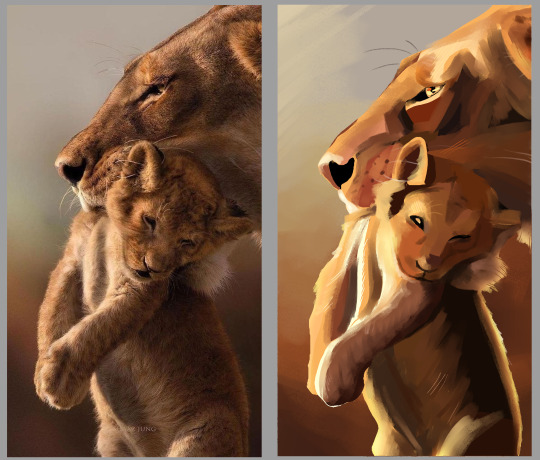
Another photo study! original photo credit to Shaaz Jung, interpretive painting by me!
Lasso tool and DAUB Square Oil Brush/- Clip Studio Paint EX
#my art#tlp draws#photo study#lion#lioness#lion cub#digital art#digital painting#african mammals#big cats
158 notes
·
View notes
Text
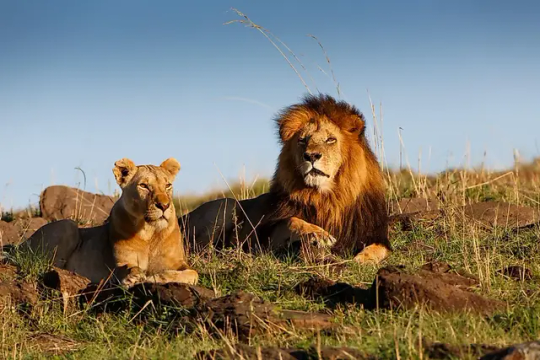



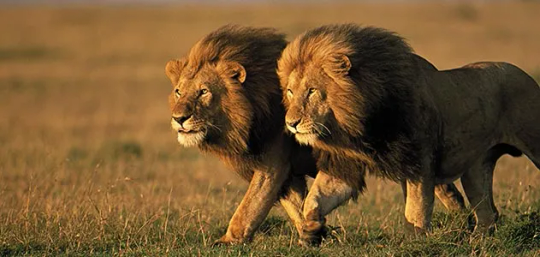
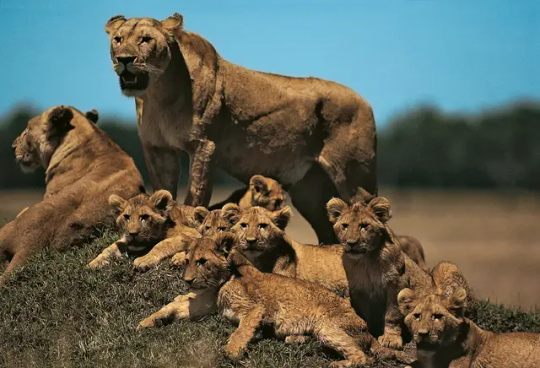
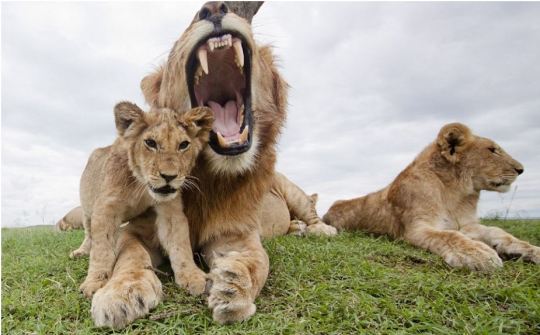

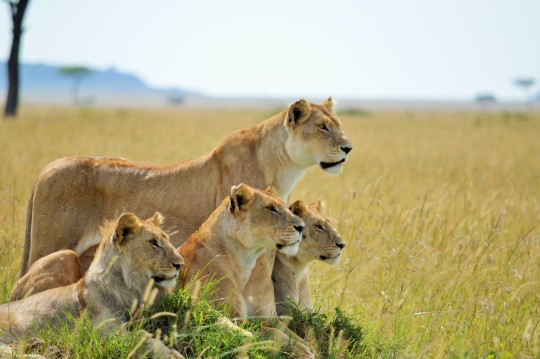
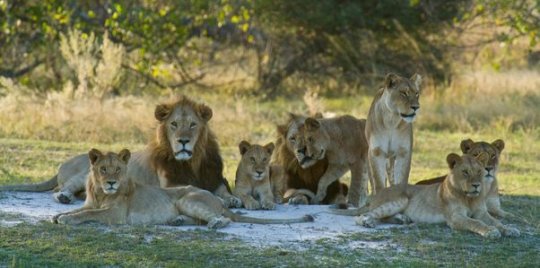
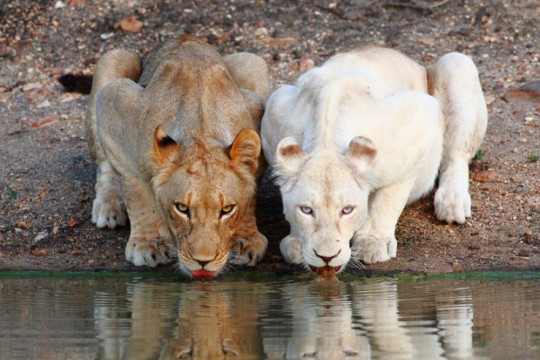
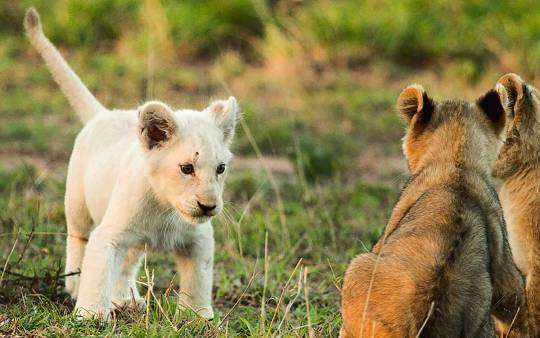
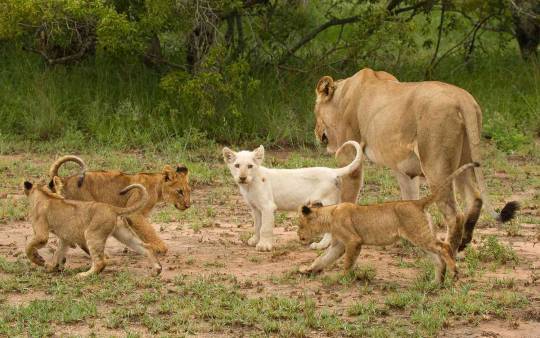
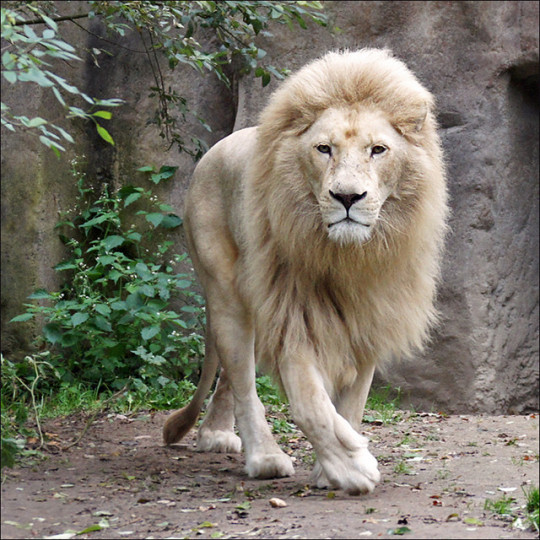
Panthera leo melanochaita better known as the east African lion, the Southern lion, the Southern African lion, or the East-Southern African lion,, is a subspecies of lion native to eastern and southern Africa. Here they prefer to inhabit grasslands and savannas, but are also known to inhabit open woodland, scrublands, and montane forests. African lions are the most social of all wild felines, living in groups of related individuals and their offspring called prides which number 3 to 30 females and 1 to 4 males. East African lions typically prey upon ungulates such as wildebeest, cape buffalo, eland, gemsbok, nyala, roan and sable antelope, warthogs, bush pigs, zebra, tsessebe, waterbuck, kudu, hartebeest, kob, and thomson’s gazelle, however they are also known to hunt other prey from as small as common mice to as large as young or infirm African bush elephants. Lions are themselves occasionally killed by other predators such as wild dogs, hyenas, leopards, other lions, and crocodiles. Female east African lions average around 7.5 to 8.9ft (2.3 to 2.7m) in length, and 183 to 370lbs (83 to 168kgs) in weight while males average around 8.1 to 9.4ft (2.47 to 2.84m) in length and 321 to 496lbs (145 to 225kgs) in weight, however lions as big as 11ft (3.35m) and 825lbs (375kgs) have been known to exist. This marks the lion as the second largest extant cat after the tiger. The lion is a muscular, broad-chested cat with a short, rounded head, a reduced neck, and round ears. The fur varies in color from light buff to silvery grey, yellowish red, and dark brown, additionally albino and leucistic individuals are not unheard of. Mature males typically sport long flowing manes, but may occasionally lack them. Additionally females may occasionally grown manes as well. Breeding may occur year round, with each mature female having there own estrous cycle. When in heat she will breed with one or more partners. After a 110 day pregnancy a mother lion will give birth to 1 to 4 cubs in a secluded den away from the rest of the pride. She will not rejoin the pride until her young are around 6 to 8 weeks of age. East African Lions reach maturity around 2 to 4 years of age, at which point the males are typically forcibly evicted from the pride and females may choose to set of in search of another to join. Under ideal conditions an east African lion may live up to 18 years.
#pleistocene pride#pleistocene#pliestocene pride#pliestocene#cenozoic#ice age#stone age#mammal#lion#africa#african lion#east african lion#white lion#cub#lioness#cat#big cats#feline
42 notes
·
View notes
Text

Old characters I come back to every now and then. Left to right is Themba, Zenzele, and Imka, a trio of nomadic lions who've suffered from tragic origins that became a found family.
Themba is an adult lion whose two older brothers were killed by poachers. Zenzele is a teenage leucistic lion who was kicked out of his coalition of male lions because his pale coat constantly blew their cover during hunting, making him useless. And Imka was forced to run from her old pride to avoid being killed by the pride's male lion, as her father was a rival lion not from their pride. But against all odds the three befriended each other and managed to survive as one.
14 notes
·
View notes
Text

Febroary day 3 - Lion
I really like how this one turned out! I still struggle drawing lions but I think I'm starting to get the hang of it! Especially the manes are, I think an improvement from last year!
Hope you enjoy my illustration! If you do please leave a like and a comment! Any shares are also much appreciated.
For more Wildcats this month be sure to follow me!
#animal art#febroary#febroary2024#febroarychallenge#lion cub#lioness#animal drawing#animal family#animal illustration#wildlife art#lion drawing#big cat art#african big cats#big cats
7 notes
·
View notes
Text
Another African Safari, 1969
“An African Childhood” Movie Previously on An African Childhood. We lived in East Africa from 1967 to 1971. One of the greatest kicks was to drive out in the Bush, on “safari”, a Swahili word that just means “trip”. We’d go to a National Park, and look for adventure and animals. On the previous movie, we went to Maasaï Mara, a unique game reserve in Kenya that connects with Serengeti, across the…
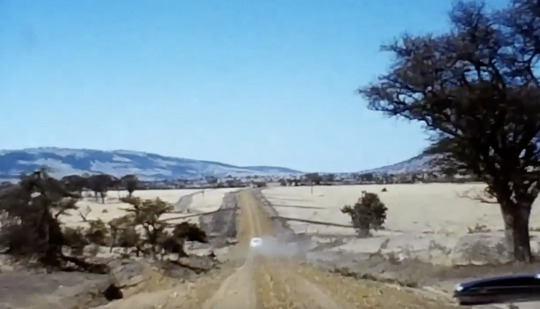
View On WordPress
0 notes
Text
Dandelion News - March 15-21
Like these weekly compilations? Tip me at $kaybarr1735 or check out my Dandelion Doodles! This month’s doodles, like every third month, will be free to the public, so take a look!
1. Zoo 'overjoyed' as lion cubs increase pride to 10
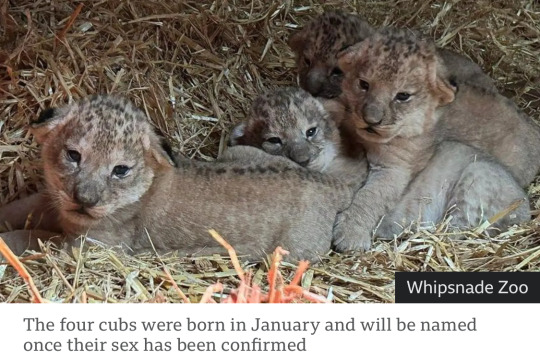
“The litter of rare northern African lions was the second batch to be born recently at Whipsnade Zoo in Bedfordshire, after three arrived in November. […] "The youngsters will grow up side-by-side with their half-siblings, and I'm sure they'll love having an abundance of playmates."”
2. Ohio Appeals Court Rules Trans Care Is Healthcare, Strikes Down Ban For Trans Youth

“The ruling rested on two key findings: first, that gender-affirming care constitutes legitimate medical treatment, and second, that parents have the constitutional right to make healthcare decisions for their children.”
3. Oystercatcher Recovery Campaign Offers a Rare Success Story about Shorebird Conservation
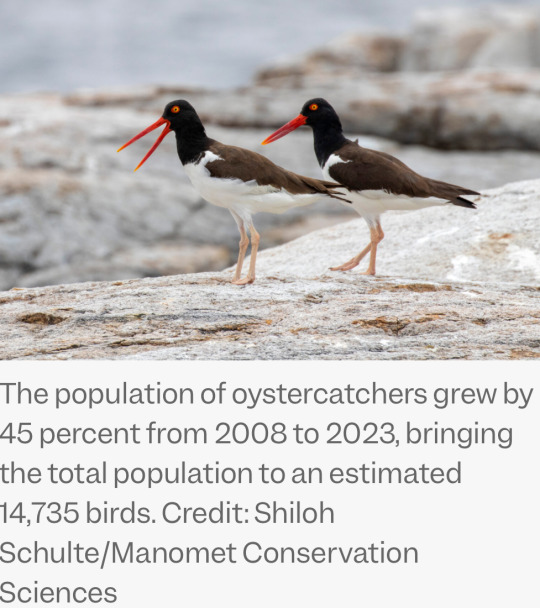
“Fifteen years of coordinated conservation efforts have produced a significant recovery in the U.S. population of the American oystercatcher[….] Schulte predicted that the protection efforts will survive [federal funding cuts] because of the large number of non-federal partners involved.”
4. Fish-tracking robot aims to make fishing more sustainable in developing nations

“A solar-powered, transparent [robot] that can roam the waters autonomously for five days at a stretch, counting fish [… can help fishers] avoid the overfishing [… and] mean less fuel consumed by boats searching for schools of fish, and less degradation of nets due to trawling where there are no fish.”
5. Zoologist Rediscovers Grasshopper Species Believed Extinct
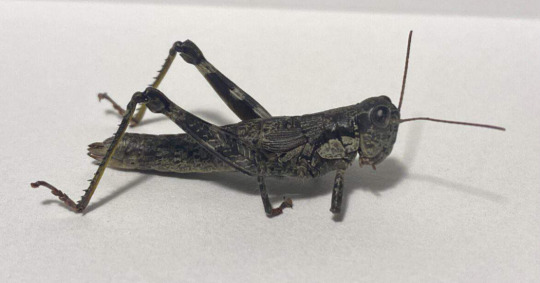
“[… T]he Appalachian grasshopper […] camouflages with its surroundings—perhaps part of the reason people haven’t seen it [since 1946]. [… A zoologist] had seen some reports on iNaturalist that he thought could have been the species[, …] and after surveying several locations, he found a female.”
6. Scaling agroforestry can support fisheries, local food production and cultural practices

“The research found that combining native forest protection (100,000 acres) with transitioning suitable fallow agricultural land to agroforestry (400,000 acres) could [reduce] erosion and boosting nearshore food production by almost 100,000 meals per year[….]”
7. A cell pulls off one of the 'Holy Grails' of biotechnology

“[… A] single-celled alga with a nucleus [… can conduct] a chemical conversion reaction that helps create some of the essential building blocks of life. […] One day, Capone says the nitroplast could be introduced to crops to allow them to convert their own nitrogen without relying on external fertilizer.”
8. FERC: Solar + wind set for a strong 3-year run despite Trump’s sabotage

“Solar accounted for 68.2% of all new generating capacity placed into service in January – more than double the solar capacity added a year earlier (1,176 MW). […] Around 30% of US solar capacity is in small-scale (e.g., rooftop) systems that are not reflected in FERC’s data.”
9. As ghost junk haunts the sea, ‘mermaids’ are fighting back

“Just two days after completing the training, Diana Garcia, one of the Sirenas, helped remove nearly 900 kilograms (2,000 pounds) of [abandoned] ghost gear and debris in the waters near her community[….]”
10. A Nest-Protecting Program Pays Off for Alabama’s Snowy Plovers
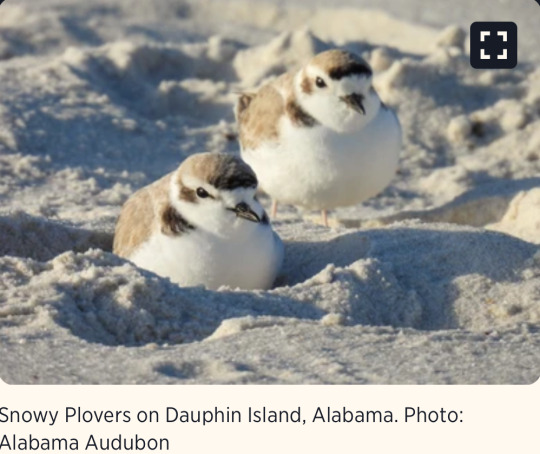
“Over the past two breeding seasons, 18 Snowy Plover chicks fledged—a major turnaround after five years of almost no chick survival. [… The team made] a concerted effort to educate the public about the need to give the birds space[, … and] people have not directly caused plover losses in Alabama recently[….]”
March 8-14 news here | (all credit for images and written material can be found at the source linked; I don’t claim credit for anything but curating.)
#hopepunk#good news#nature#zoo#lion#baby animals#us politics#ohio#trans rights#trans healthcare#healthcare#birds#conservation#fishing#sustainability#grasshopper#insect#extinction#inaturalist#agroforestry#hawai'i#hawaii#biotechnology#algae#symbiosis#nitrogen fixation#solar#solar energy#solar power#endangered species
722 notes
·
View notes
Text

Don’t let your roars go unheard this Election Day. Gather your pride and go out and vote! Did you know? Considered the most social of cats, lions live in prides that consist of one or more males, several females, and cubs. African lions breed at 3.5 years old, and the cubs are born spotted at birth. Adult male lions weigh about 375 pounds (170 kilograms), while females average 265 pounds (120 kilograms). See this diorama up close in the Museum’s Hall of African Mammals.
Photo: R. Mickens/ © AMNH
#science#amnh#museum#natural history#nature#animals#fact of the day#did you know#election day#lions#african lion#animal facts#cool animals#museum of natural history#cats#big cats
411 notes
·
View notes
Text
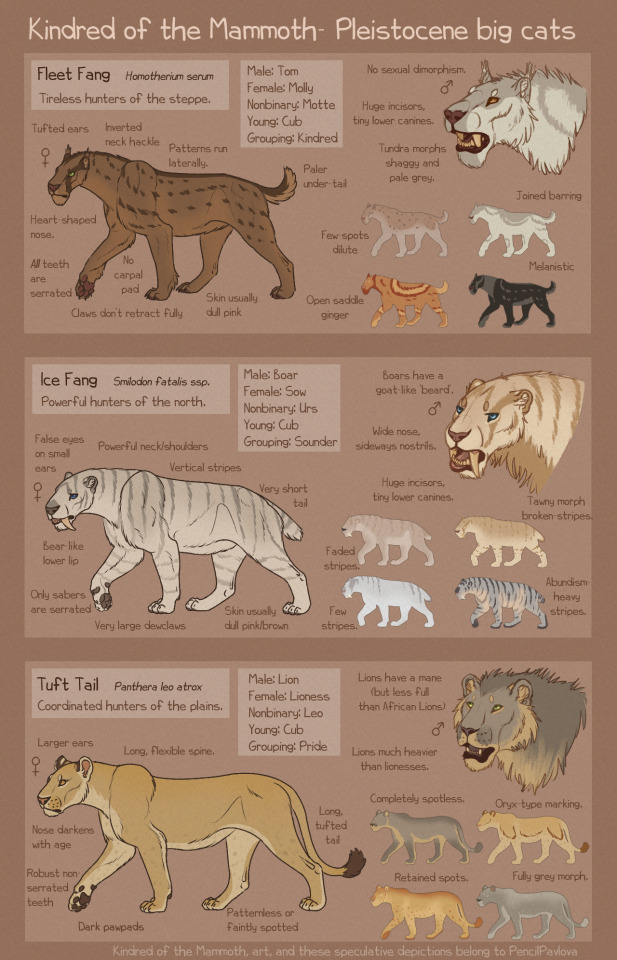
Behold! Big Kitties!
I wanted to make one of these for fun mostly, also because I wanted to slightly update how I draw the Fleets to fit the Homotherium mummy; mostly in the lack of carpal pads and that brown is the wildtype colour uvu
Notes that didn't fit:
- Eye colours can be anything natural-looking except in Ice Fangs, which are always blue (that's actually where their name comes from)
- None of the colour variants are sexually dimorphic (though some may be sex linked)
- All species can be fluffier than shown here (especially in winter), I just shaved them here to show the varied anatomy
- All the cats probably have a melanistic and albino variant but there aren't any in Kindred so I didn't include them
- I'm never gonna draw the characters in Kindred with detailed patterns as shown here, that would take 554637 hours per page cx
Don't @ me about paleo inaccuracies bc there's a lot of intentional exaggerations e.g. how variable they can be, for the sake of making characters actually fun to work with + the Tuft Tails are basically just lions because their skeletal anatomy is sooooo similar but bigger (and lions are pretty)
Image ID
"Kindred of the Mammoth- Pleistocene big cats"
Fleet Fang- Homotherium serum.
Tireless hunters of the steppe.
Male: Tom
Female: Molly
Nonbinary: Motte
Young: Cub
Grouping: Kindred
A drawing in a slightly more realistic style than Kindred of a brown Fleet Fang with green eyes and extensive barring running down her sides. There is a headshot of a tom with shaggy grey and white fur, who has his mouth open in a slight pant to show dental anatomy.
Notes read:
"Inverted neck hackle
Patterns run laterally.
Tufted ears
Heart-shaped nose.
All teeth are serrated
No carpal pad
Claws don't retract fully
Skin usually dull pink
Paler under-tail
No sexual dimorphism
Huge incisors, tiny lower canines
Tundra morphs shaggy and pale grey"
There are a few natural variants shown as well: dilute few spots, joined-barring (lateral stripes instead of broken spots), Open-saddle ginger, melanistic with paler grey markings.
Ice Fang- Smilodon fatalis ssp.
Powerful hunters of the north.
Male: Boar
Female: Sow
Nonbinary: Urs
Young: Cub
Grouping: Sounder
A drawing in a slightly more realistic style than Kindred of a white, grey striped Ice Fang with blue eyes . There is a headshot of a boar with pale golden fur and a darker beard under his neck. He has his mouth open in a slight pant to show dental anatomy.
Notes read:
False eyes on small ears
Powerful neck/shoulders
Vertical stripes
Very short tail
Bear-like lower lip
Only sabers are serrated
Very large dewclaws
Skin usually dull pink/brown
Boars have a goat-like 'beard'.
Wide nose, sideways nostrils.
Huge incisors, tiny lower canines.
There are a few natural variants shown as well: Faded stripes with a pale warm grey coat, Few stripes only on the shoulders and rump, Tawny morph with broken stripes (they form vertical bars), Abundism- heavy stripes that are interlocking and covering the whole body.
Tuft Tail- Panthera leo atrox
Coordinated hunters of the plains.
Male: Lion
Female: Lioness
Nonbinary: Leo
Young: Cub
Grouping: Pride
A drawing in a slightly more realistic style than Kindred of a golden tawny Tuft tail (lioness) with amber eyes. There is a headshot of a lion with greyish fur and a tawny underbelly. He also has a darker mane around his neck. He has his mouth open in a slight pant to show dental anatomy.
Notes read:
Larger ears
Long, flexible spine
Nose darkens with age
Robust non-serrated teeth
Dark pawpads
Patternless or faintly spotted
Long, tufted tail
Lions have a mane (but less full than African Lions)
Lions much heavier than lionesses.
There are a few natural variants shown as well: Completely spottless warm grey with a tawny underbelly, orxy type dark markings that outline the paler underbelly, retained juvenile spots and a reddish tint, fully grey morph that is entirely desaturated.
A note at the bottom reads: Kindred of the Mammoth, art, and these speculative depictions belong to PencilPavlova [END ID]
#and yes Bat does break the law with his vertical patterns#let's just say he has a pattern mutation- like king or fewspot cheetahs#i forgive him because he's cute (said through gritted teeth)#i maaaaaay have him moult it out as cub spots but probably not bc i like his skelebones design#mammothref#febroary#febroary2025#Im gonna pretend i made this for Febroary but that's a lie bc i started it before i remembered it existed cx#homotherium#sabertooth#sabercat#clangen#mammothclan#lion#panthera atrox#smilodon#ID in alt text#lioness#leo#panthera leo atrox#smilodon fatalis#homotherium serum#mammoth ref
280 notes
·
View notes
Note
That "everything My Pride got wrong about lions" list you mentioned in one of previous asks? Would love to actually see that 👀
We don't have an exact "list" per se but here's the main things that spring to mind that are shown in MP that are factually incorrect:
Prides are led by a single male and no other male may have control of the pride: incorrect. Prides can and will consist of more than one male and males will sometimes team up to run out the resident male or males.
Lions can bite through a rival's mane: a lion's mane is like thick, fluffy armour that protects the throat and it absolutely cannot be penetrated in the manner like Quick did with Starmane. This is why lions actually opt to attack the face, the back, or the hips.
Lionesses do not defend their cubs from rogue males: lionesses absolutely do defend their cubs from males, including those that are related to them by blood, such as the father. They're very protective mothers. There's even reports of lionesses running their cubs away from the pride and hiding them so the rogue male cannot find them.
Lions are active during the day: lions are actually crepuscular and more active at dawn, dusk and at night for the African nights are cooler and present better hunting opportunities. They tend to rest during the day. I know there are instances where this isn't the case, but that just comes with being opportunistic hunters. They will also hunt during storms, uilitising the weather to their advantage. Hence why Travellers have names related to the weather. We just thought it was a cool fact.
Lions have slit pupils: lions, like all big cats, have round pupils. There are theories as to why this is, but at the end of the day, only domestic cats have slit pupils.
Male lions are called manes: Yes, we know that this is a xenofiction thing and MP has every right to adopt their own vocabulary, but people literally think that male lions in a pride are called "manes" and male lions not in a pride are called "no-manes". So apparently it needs to be said that male lions are simply called lions, and females are lionesses.
Tsavo lions are a subspecies of lions that do not develop full manes: So, this appears to be a misconception that some MP fans have walked away with and I just want to correct the record on this. Tsavo lions are not a subspecies of the African lion. They are named after the geographical location where maneless lions are more apparent, because geography and environment seems to have an effect on how a lion's mane forms. Lions are sensitive to heat, so the hotter a region is, the less likely a mane is to form. The Tsavo region is known to be hot and dry and this is why lions there have problems developing a full mane. Genetics is also theorised to play a role. Such a thing has also been observed in West African regions and Ancient Egyptian art has also depicted maneless lions. It's also worth noting that Asiatic lions also have smaller manes than their African counterparts due to Asia having a hotter climate. This is why some of our characters like Fade and Larkspur do not have full manes. Both of them have either been raised in a desert region or a region adjacent to a desert and the heat has affected them developing a full mane. So, Moonstrike being described as a Tsavo lion was completely pointless and confusing. I can only assume it was Tribble trying to flex her lion knowledge but she also didn't even bother to explore why exactly Tsavo has a connection to maneless lions, thus fans assuming that the lack of a mane is down to Moonstrike being part of some sort of subspecies. I'm probably missing some things out but this is what I have so far. - RJ
144 notes
·
View notes
Video
African lion Amersfoort 3L0A0678 by safi kok
#animal#Africa#afrika#Afrikaanse leeuw#african Lion#mammal#zoogdier#dier#predator#panthera leo leo#Leeuw#Lion#leeuwenwelp#lioncub#cub#welp#Amersfoort#flickr
69 notes
·
View notes
Text
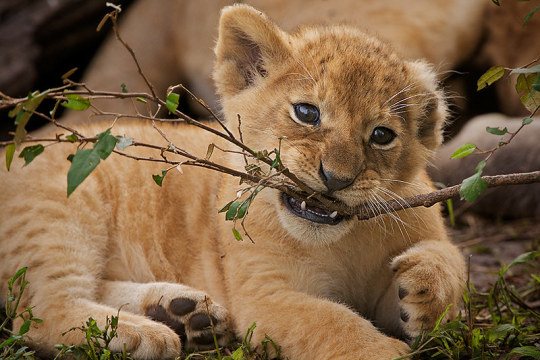
An African lion cub (Panthera leo) chews on a branch in Masai Mara, Kenya, Africa
by Sean Crane
#african lion#lion#big cats#felines#panthera leo#panthera#felidae#carnivora#mammalia#chordata#wildlife: kenya#wildlife: africa
587 notes
·
View notes
Text
In Kenya, Martial Eagles Hunt Lion Cubs For Lunch
Martial eagles, with wingspans that can exceed six feet, can take out young impalas or gazelles. Recently, researchers have seen them targeting another species’ young.
— By Joshua Rapp Learn | October 3, 2024

Martial Eagles (One Shown in Serengeti National Park) Occasionally Hunt Lion Cubs, New Rsearch Shows. Photograph By Klaus Nigge, National Geographic Image Collection
In December 2012, tour guides in Kenya’s Maasai Mara National Reserve witnessed a series of killings targeting one of the savannah’s top predators. An adult martial eagle followed a pride of lions for weeks, waiting for the right time to swoop in and kill three cubs in total.
“This is an eagle really looking at these lions and thinking, ‘I’m going to systematically hunt these lions,’” says R. Stratton Hatfield, a Ph.D. candidate at Wageningen University and Research in the Netherlands.
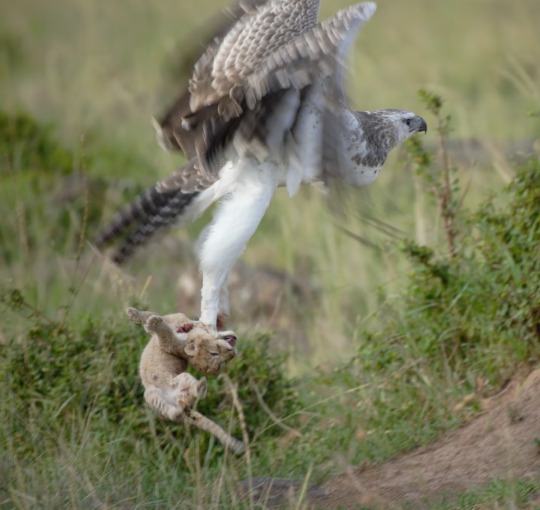
A Juvenile Martial Eagle snatched this three-week-old lion cub on March 15, 2019, in the Mara North Conservancy, Kenya. No one saw the bird kill the cub. Based on the fledgling eagle's behavior, researchers suspect that an adult female gave the cub to the fledgling. Photograph By Jes Lefcourt
While the supposed kings of the jungle may dominate the land around them, this incident and others like it show that African lions (Panthera leo) may not always sit on top of the food chain when it comes to the skies. In fact, martial eagles (Polemaetus bellicosus) likely prey on lion cubs when the opportunity arises, Hatfield and his colleagues recently reported in Ecology and Evolution.
“It’s really a testament to the predatory nature of martial eagles,” Hatfield says.
Queen of the Skies
Martial eagles’ wingspans can exceed six feet. Adult females weigh more than 10 pounds, while adult males typically weigh around seven pounds. Though comparable in size and ecology to golden eagles, the species often kills larger prey. The birds swoop in and dig their razor-like talons into their prey’s spine at the back of their skull, sometimes taking out young impalas or gazelles far above their weight class. “[Their talons] are just massive killing utensils,” Hatfield says. “From a predator perspective, they are impressive in what they’re able to do.”
Hatfield’s team only recently realized the birds also preyed on other predators. The team collected seven records, including the 2012 incident, that describe martial eagles preying on lion cubs, resulting in the deaths of nine cubs and one near miss. Most of these episodes probably involve larger females, Hatfield suspects, though two records included juveniles preying on cubs.
The earliest case comes from 2008, when a photographer captured an image of an eagle feeding on a freshly killed cub, while the most recent was in 2023, when a safari guide saw a juvenile eagle hunt and kill a cub large enough that the raptor couldn’t fly off with it.
Risk Versus Reward
Despite their aerial antics, martial eagles are typically risk averse. “When they go to take a lion cub, it’s with a lot of recognition of the risks,” Hatfield says. But not all records seem to show this careful calculation.
In the one failed killing, a martial eagle swoops in to snatch a six-week-old cub right next to its mother. The lioness spots the approaching danger, and “literally leaps in the air to try to take the martial out of the sky,” Hatfield describes. “You can just see the lioness’s eyes lock onto something, then she crouches and launches.”
The eagle dodged the counterattack, and didn’t get the cub, but the whole maneuver “was just stupid.” Hatfield speculates that the raptor didn’t see the lioness. Episodes like this are so dangerous for the eagle, “you wonder if they are doing something ever just for fun,” he says.
Amy Dickman, a conservation biologist at Oxford University in the U.K., isn’t surprised that eagles will go after cubs again and again if the strategy proves successful. She also leads Lion Landscapes, a nonprofit focused on coexistence of humans and wildlife in Kenya and Tanzania, and says the conclusions of Hatfield’s team “seem sound.”
As far as the lions are concerned, “it’s just another kind of risk that lions have to deal with,” Dickman says, like predation from hyenas or male lions from competing prides. While she doesn’t think the eagles pose a conservation threat to the big cats, an individual pride in a given area might feel pressure if a martial eagle has honed in on their cubs as a food source. “It shows you how interesting and diverse the natural world is,” Dickman says.
Predators or Prey?
Martial eagles aren’t picky when it comes to big cats. Some have taken cheetah and leopard kittens, as well. Hatfield also notes the risk probably goes both ways—lions could and probably have hunted adult eagles or nests. At least one YouTube video shows a leopard killing a martial eagle.
“The relationships between top predators at the top of the [food] pyramid are complicated,” Hatfield says.
Martial eagles are considered endangered by the International Union for Conservation of Nature, and Hatfield hopes that studies like this bring more attention to their plight. Like other large raptors in Africa, the species faces habitat loss, poaching for parts, electrocution on power lines and persecution.
“We are all so focused on the elephant and lion and rhino,” Hatfield says. “A lot of these big eagles and vultures are going to go extinct right in front of our eyes.”
61 notes
·
View notes
Note
Hyena jaune and lion yang would hate each other but they like each other but must keep it a secret
In the African savanna, there are two animals constantly at odds with one another. The African lion, often symbolized to be associated with kings, with lionesses who fight fiercely to protect their cubs and sisters for the sake of their male leader, and the Spotted hyena, the top scavenger with an appetite for rotting flesh, where the lowest ranked female ranks higher than the highest ranked male. Both animals compete for food to the point of developing a natural animosity with one another. In some cases, hyenas will specifically target lion cubs and elders, while lions will maim hyenas with mortal wounds and leaving them to die.
Though not the same as their animal counterparts, two clans of faunus which share these traits compete with each other over the continent of Sanus. The Xiao Long clan, whom value loyalty, honor, and justice, reside on the island of Patch, under the protection of the Kingdom of Vale. The Arc clan, whom value freedom, community, and legacy, reside to the south, in the shadows of Mountain Glenn, in the village of Ansel, not bound by the laws of any one kingdom.
Would it be possible for these two clans to be reunited under the banner of one? Perhaps, long ago, before the raids began. Raven Branwen, the leader of the Branwen Bandit Tribe, attacked the Arc clan for their resources. However, when they sought retribution, the Xiao Long clan protected her. A child of the Arc clan was killed in the assault, and the Arc's sought the death of Raven's child, who was held in protection by the leader, Taiyang Xiao Long. He refused, declaring that any who made an attempt on him or his kin would suffer greatly.
This is when an unknown member of the Arc clan made the attempt on the wife of Taiyang, spurring the clan head to declare war on the Arcs. Bloody combat was engaged for days, even weeks on end, until the Arc clan was forced to surrender before the might of the Kingdom of Vale. However, the Arcs vowed that one day, they would see the end of the clan of Xiao Long.
--------------------------------------------------
"Are you sure you want to do this?"
"I'm sure, Mom." Jaune nodded, taking the hug from her and hugging in kind. "This is something I have to do."
His mother looked to his father. "If... If this doesn't work out, then there's no shame in coming home."
Jaune frowned at this. Were they expecting him to fail? To quit when things got too difficult for him? A part of him wanted to shout at his parents for insinuating this was what they meant, but he instead chose to keep his mouth shut. Especially with his mother as the clan matriarch. Punishment for a man contesting with the matriarch was harshly dealt, regardless if the man was correct.
Besides, deep down, he knew they were right.
"Jaune?" He looked to his mother. "Be careful. Please?"
"I will, Mom." He smiled before he turned and left to board the bus. He sat in his seat and looked to his family waving to him. His mother, his father, his sisters, his aunts and uncles. They all waved him off, to which he waved back. Next stop, the bullhead. And from there, Beacon.
--------------------------------------------------
"Yang," the eldest daughter of Taiyang looked to him, "there's someone here to see you."
Standing next to him was her mother, Raven, her hand resting on the pommel of her sword. Same as always, she didn't have a smile on her face. She'd never seen the woman smile, but that's also a slightly unfair statement since the woman was never around for longer than a day since Yang was old enough to notice. Maybe even before then.
"Yang." Raven greeted, entering Yang's room. She looked around, as if she were judging Yang's choice of decorum. "KickerZ?"
"What do you want, Raven?" Yang replied.
"You're going to Beacon."
"Yeah? What about it?"
"I went there, too, a long time ago."
"What, and you're choosing to offer me advice now when I'm about to go?" Yang stood up, doing her best to keep her temper reigned in. "Because the last we talked was... Wait, we never talked. Because you were never there."
"I was busy."
"Being a thief?"
"Bandit."
"Right, because that's so much better." Yang rolled her eyes. "Why are you here, Raven? Don't tell me it's for a hug goodbye because I'm not hugging you."
"Be careful."
Yang blinked. She didn't expect Raven to offer caution, partially because in all the stories Dad told about her, Raven usually was the one to disregard such warnings. It would be sweet, if it came from anyone other than Raven.
"I will." Yang crossed her arms. "I don't make the same mistake twice. Especially with the Grimm."
"It's not the Grimm I'd be worried about." Raven stared at the KickerZ poster with a muscular blond man with fangs and a tail. His eyes were as blue as hers... "You know about the Arcs?"
"A bunch of bandits south of Mountain Glenn." Yang said off-handedly. "Friends of yours?"
"No." Raven turned away, walking out the door. "I mean what I said, Yang."
"Yeah, I'm sure you did." Raven then left. Yang stepped out shortly after, but found the woman had already left without a trace. No trace, that is, except for a single black feather. Probably fell off of her while walking. Did that woman ever change clothes, or bathe? Yang didn't want to think about it.
Mostly because she needed to meet up with Ruby before they left for Beacon together.
#rwby#jaune arc#yang xiao long#hyena!faunus jaune#lion!faunus yang#mama arc#papa arc#ruby rose#taiyang xiao long#raven branwen#arc vs xiao long#xiao long vs arc
72 notes
·
View notes
Text
With heavy hearts, we share that the Tsalala Female has lost all three of her cubs.
The Tsalala Female has been dealt a difficult hand from the start, mirroring the challenges faced by her mother, who also raised her first litter alone after the other lionesses in the pride died. Despite this, in recent months, the Tsalala Female was spotted nurturing her cubs with care, despite the looming dangers in her territory. She had already suffered the loss of one cub during a fierce confrontation with nomadic males (covered by Sean Zederberg), a heartbreaking reminder of the relentless challenges she faces. But even as October gave way to November, hopes remained that her remaining cubs might survive to carry on the Tsalala legacy.
Unfortunately, territory dynamics have only grown more complex. With the Kambula Males (Ntsevu breakaway Males) gaining strength and expanding their reach, they are poised to challenge the Plains Camp Males for dominance in the north. This mounting tension has cast an unsettling shadow over the prides linked to the Plains Camp males, including the Tsalala Female. While the Plains Camp duo continues to thrive, patrolling a vast territory and spending time with their associated prides, the shift in power dynamics has created an uncertain environment.
Tragically, it was in this turmoil that the Tsalala Female lost her remaining cubs. First, only one cub was missing, and she was seen desperately searching with the two others at her side. But just a few days later, after an altercation with the Ximugwe Pride close to the area in which she has been keeping her cubs: she was spotted again, bloodied, and this time calling out alone—her remaining cubs nowhere to be found. Reports from our neighbours indicate that both Plains Camp Males have visited the Tsalala Female and her cubs in the past without aggression, ruling them out as the cause of this heartbreak.
As we struggle to piece together the mystery of what really happened, the reality settles in, her cubs are gone, and the Tsalala Female is left to face her solitary path once more.
20 notes
·
View notes
